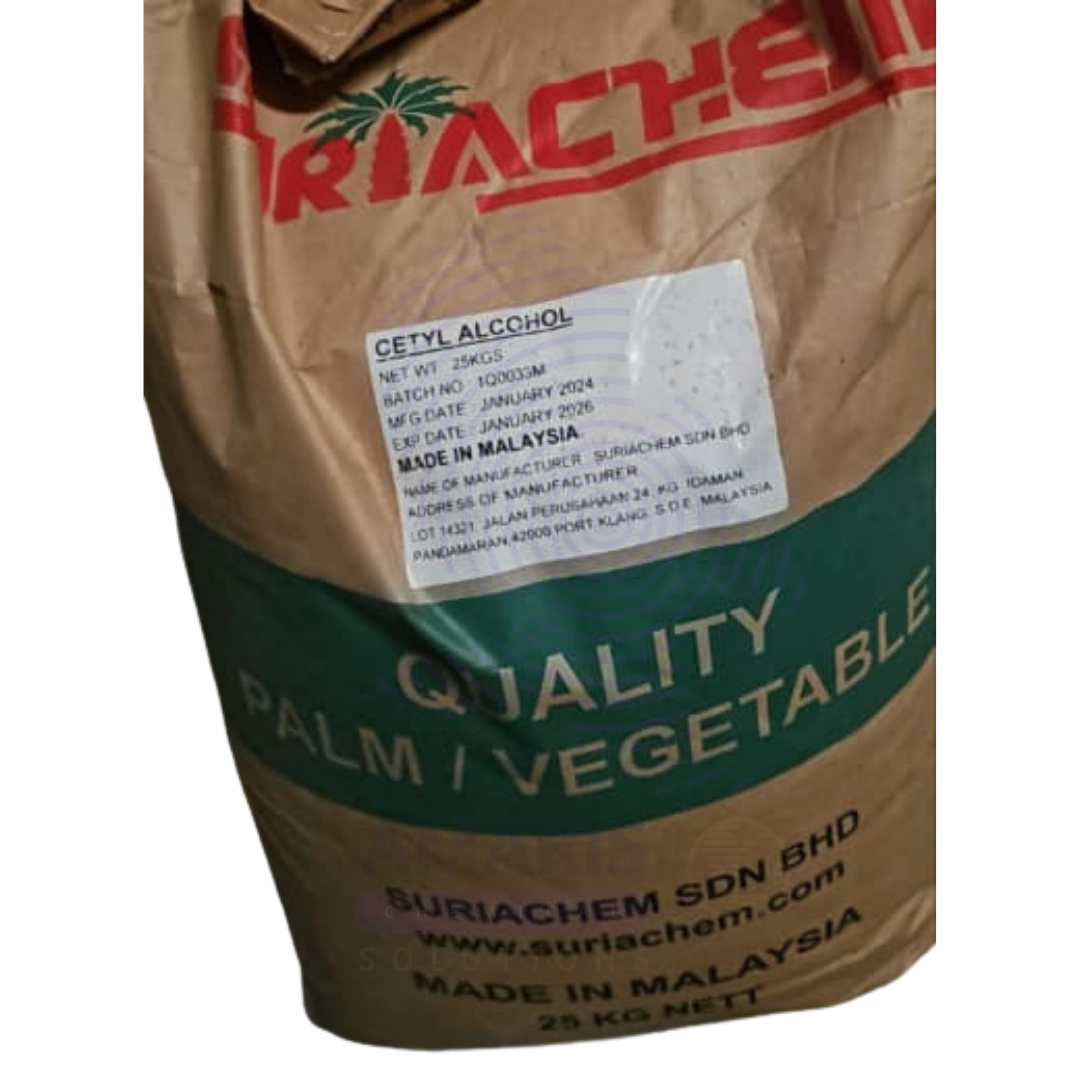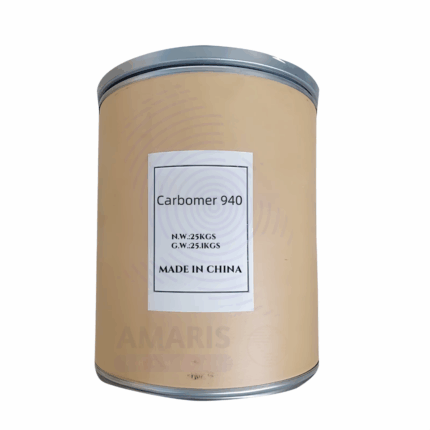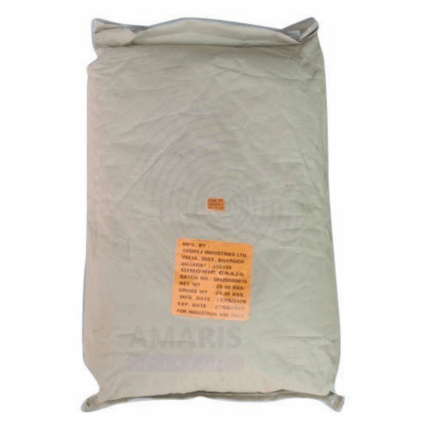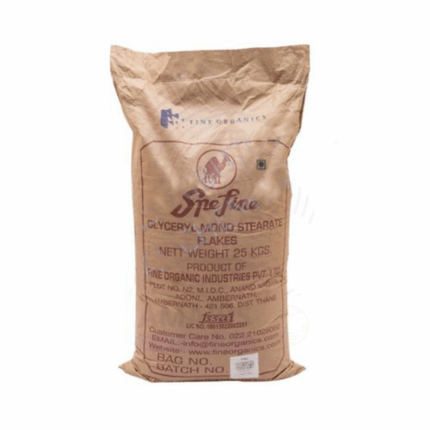Cetyl Alcohol
Cetyl Alcohol, also known as 1-Hexadecanol or Palmityl Alcohol, is a fatty alcohol derived primarily from natural sources such as palm oil and coconut oil. It appears as a waxy, white to pale yellow solid with a faint fatty odor. Cetyl Alcohol is widely used in cosmetic, pharmaceutical, and industrial formulations due to its emollient, emulsifying, thickening, and stabilizing properties. It helps improve texture, consistency, and moisturizing effects in personal care products. Cetyl Alcohol is compatible with many ingredients, making it a versatile multifunctional ingredient.
Cetyl Alcohol
Primary Uses
Cosmetics & Personal Care
- Acts as an emollient and thickener in lotions, creams, conditioners, and hair care products.
- Used as an emulsifier and stabilizer in oil-in-water emulsions, improving product texture and consistency.
- Provides a smooth, non-greasy feel and helps to reduce the greasy texture of oils.
- Used in lipsticks and balms to enhance structure and application.
Pharmaceuticals
- Serves as a base and thickening agent in ointments, creams, and lotions.
- Used in topical formulations to improve texture, spreadability, and skin conditioning.
Secondary Uses
Industrial Applications
- Utilized as a lubricant and anti-static agent in plastics and textile processing.
- Used in the manufacture of surfactants and detergents as an intermediate or ingredient.
Food Industry
- Sometimes used as a processing aid or emulsifier in food packaging or coatings (subject to regulations).
Chemical Synthesis
Serves as an intermediate in the production of esters and other derivatives used in cosmetics and industrial chemicals.
- Basic Identification Attributes
- Chemical Name (IUPAC): Hexadecan-1-ol
- Common/Trade Name: Cetyl Alcohol
- CAS Number: 36653-82-4
- HS Code: 2905.43.00
- Molecular Formula: C16H34O
- Molecular Weight: 242.45 g/mol
- Synonyms:
- 1-Hexadecanol
- Palmityl Alcohol
- Cetyl Hydroxide
- Physical & Chemical Properties
- Physical State: Solid waxy flakes, beads, or pastilles
- Color & Odor: White to pale yellow; faint fatty odor
- Melting Point: 48–54°C (118–129°F)
- Boiling Point: ~344°C at atmospheric pressure
- Density: ~0.81 g/cm³ at 20°C
- Solubility:
- Insoluble in water
- Soluble in oils, ethanol, chloroform, ether
- Flash Point: Approximately 190°C
- Stability: Stable under normal storage; resistant to oxidation
- Safety & Hazard Attributes
- Hazard Class (GHS): Not classified as hazardous
- NFPA Ratings:
- Health: 0
- Flammability: 1
- Reactivity: 0
- Exposure Limits: No specific occupational exposure limit
- Toxicity: Low toxicity; generally recognized as safe in cosmetics
- Reactivity: Chemically stable; combustible at high temperatures
- Storage & Handling Attributes
- Storage Conditions: Store in a cool, dry place away from heat and ignition sources
- Container Type: Sealed plastic or metal containers to avoid contamination
- Shelf Life: Up to 3 years when stored properly
- Special Handling: Avoid dust formation; use PPE when handling large quantities
- Regulatory & Compliance Attributes
- FDA Status: Approved for use in cosmetics (21 CFR 182.10)
- REACH Status: Registered
- Transportation: Not classified as hazardous
- Waste Disposal: Follow local regulations; biodegradable
- Environmental & Health Impact
- Ecotoxicity: Low environmental toxicity
- Persistence: Biodegradable under environmental conditions
- Bioaccumulation: Not expected to bioaccumulate
- Carcinogenicity/Mutagenicity: Not classified as carcinogenic or mutagenic
Biodegradability: Readily biodegradable
-
Safety Handling Precautions
- PPE: Gloves and safety goggles recommended for bulk handling
- Handling: Avoid creating dust; use in well-ventilated areas
- Storage: Keep container tightly closed, away from heat sources
- Hygiene: Wash hands after handling; avoid ingestion and eye contact
First Aid Measures
- Inhalation: Move to fresh air if dust inhaled; seek medical attention if breathing difficulties occur
- Skin Contact: Wash skin with soap and water; seek medical help if irritation develops
- Eye Contact: Rinse eyes with water for 15 minutes; consult physician if irritation persists
- Ingestion: Low toxicity; rinse mouth and seek medical advice if large amounts ingested
Firefighting Measures
- Fire Hazards: Combustible material; burns with a smoky flame
- Extinguishing Media: Use foam, dry chemical, CO₂, or water spray
- Special Precautions: Firefighters should wear protective gear and self-contained breathing apparatus
Decomposition Products: Carbon monoxide, carbon dioxide, and hydrocarbons


 Preservatives(food)
Preservatives(food) Flavor Enhancers
Flavor Enhancers Acidulants
Acidulants Sweeteners
Sweeteners Antioxidants
Antioxidants Colorants(food)
Colorants(food) Nutraceutical Ingredients (food)
Nutraceutical Ingredients (food) Nutrient Supplements
Nutrient Supplements Emulsifiers
Emulsifiers
 Collectors
Collectors Dust Suppressants
Dust Suppressants Explosives and Blasting Agents
Explosives and Blasting Agents Flocculants and Coagulants
Flocculants and Coagulants Frothers
Frothers Leaching Agents
Leaching Agents pH Modifiers
pH Modifiers Precious Metal Extraction Agents
Precious Metal Extraction Agents
 Antioxidants(plastic)
Antioxidants(plastic) Colorants (Pigments, Dyes)
Colorants (Pigments, Dyes) Fillers and Reinforcements
Fillers and Reinforcements Flame Retardants
Flame Retardants Monomers
Monomers Plasticizers
Plasticizers Polymerization Initiators
Polymerization Initiators Stabilizers (UV, Heat)
Stabilizers (UV, Heat)
 Antifoaming Agents
Antifoaming Agents Chelating Agents
Chelating Agents Coagulants and Flocculants
Coagulants and Flocculants Corrosion Inhibitors
Corrosion Inhibitors Disinfectants and Biocides
Disinfectants and Biocides Oxidizing Agents
Oxidizing Agents pH Adjusters
pH Adjusters Scale Inhibitors( water)
Scale Inhibitors( water)
 Antioxidants(cosmetic)
Antioxidants(cosmetic) Emollients
Emollients Fragrances and Essential Oils
Fragrances and Essential Oils Humectants
Humectants Preservatives
Preservatives Surfactants(cosmetic)
Surfactants(cosmetic) Thickeners
Thickeners UV Filters
UV Filters
 Fertilizers
Fertilizers Soil Conditioners
Soil Conditioners Plant Growth Regulators
Plant Growth Regulators Animal Feed Additives
Animal Feed Additives Biostimulants
Biostimulants Pesticides (Herbicides, Insecticides, Fungicides)
Pesticides (Herbicides, Insecticides, Fungicides)
 Active Pharmaceutical Ingredients (APIs)
Active Pharmaceutical Ingredients (APIs) Excipients
Excipients Solvents(pharmaceutical)
Solvents(pharmaceutical) Antibiotics
Antibiotics Antiseptics and Disinfectants
Antiseptics and Disinfectants Vaccine Adjuvants
Vaccine Adjuvants Nutraceutical Ingredients (pharmaceutical)
Nutraceutical Ingredients (pharmaceutical) Analgesics & Antipyretics
Analgesics & Antipyretics
 Analytical Reagents
Analytical Reagents Solvents(lab)
Solvents(lab) Chromatography Chemicals
Chromatography Chemicals Spectroscopy Reagents
Spectroscopy Reagents microbiology-and-cell-culture-reagents
microbiology-and-cell-culture-reagents Molecular Biology Reagents
Molecular Biology Reagents Biochemical Reagents
Biochemical Reagents Inorganic and Organic Standards
Inorganic and Organic Standards Laboratory Safety Chemicals
Laboratory Safety Chemicals Specialty Laboratory Chemicals(Special Laboratory Equipment)
Specialty Laboratory Chemicals(Special Laboratory Equipment)
 Demulsifiers
Demulsifiers Hydraulic Fracturing Fluids
Hydraulic Fracturing Fluids Scale Inhibitors(oil)
Scale Inhibitors(oil) Surfactants(oil)
Surfactants(oil) Drilling Fluids
Drilling Fluids
 Dyes and Pigments
Dyes and Pigments Bleaching Agents
Bleaching Agents Softening Agents
Softening Agents Finishing Agents
Finishing Agents Antistatic Agents
Antistatic Agents
 Admixtures
Admixtures Waterproofing Agents
Waterproofing Agents Sealants and Adhesives
Sealants and Adhesives Curing Compounds
Curing Compounds Concrete Repair Chemicals
Concrete Repair Chemicals Anti-Corrosion Coatings
Anti-Corrosion Coatings
 Surfactants(cleaning)
Surfactants(cleaning) Builders
Builders Enzymes
Enzymes Solvents (Cleaning)
Solvents (Cleaning) Fragrances
Fragrances
 Electronic Chemicals
Electronic Chemicals Catalysts
Catalysts Lubricants
Lubricants Photographic Chemicals
Photographic Chemicals Refrigerants
Refrigerants Automotive chemicals
Automotive chemicals Pyrotechnic Chemicals
Pyrotechnic Chemicals
 Biodegradable Surfactants
Biodegradable Surfactants Bio-based Solvents
Bio-based Solvents Renewable Polymers
Renewable Polymers Carbon Capture Chemicals
Carbon Capture Chemicals Wastewater Treatment Chemicals
Wastewater Treatment Chemicals
 Pigments
Pigments Solvents(paint)
Solvents(paint) Specialty Coatings
Specialty Coatings Binders/Resins
Binders/Resins Additives
Additives Driers
Driers Anti-Corrosion Agents
Anti-Corrosion Agents Functional Coatings
Functional Coatings Application-Specific Coatings
Application-Specific Coatings
 Fresh Herbs
Fresh Herbs Ground Spices
Ground Spices Whole Spices
Whole Spices Spice Blends
Spice Blends Dried Herbs
Dried Herbs
 Leavening Agents
Leavening Agents Dough Conditioners
Dough Conditioners Flour Treatments
Flour Treatments Fat Replacers
Fat Replacers Decoratives
Decoratives Preservatives(baking)
Preservatives(baking)
 Plasticizers & Softeners
Plasticizers & Softeners Reinforcing Agents
Reinforcing Agents Adhesion Promoters
Adhesion Promoters Vulcanizing Agents
Vulcanizing Agents Antidegradants
Antidegradants Blowing Agents
Blowing Agents Fillers & Extenders
Fillers & Extenders Accelerators & Retarders
Accelerators & Retarders





















